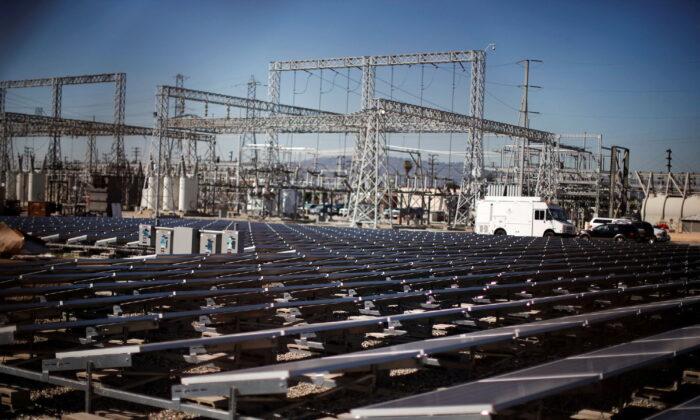California’s government is accelerating toward Gov. Gavin Newsom’s early January release of his budget proposal for fiscal year 2022–23, which begins on July 1. Newsom announced in October there would be an “historic budget surplus.” In a November 17 report, “The 2022–23 Budget: California’s Fiscal Outlook,” Legislative Analyst Gabe Petek projected a $31 billion surplus.
That would be on top of the $47 billion surplus from the previous year, as Petek calculated in a separate report on Oct. 27, “Overview of the Spending Plan (Final Version).”
The state really is rolling in the money, largely because of the immense profits of Silicon Valley and $27 billion from the federal government’s American Rescue Plan (ARP) Act Fiscal Relief Funds. As Petek wrote in his November report, “The 2021–22 budget allocated the entirety of these funds to a variety of purposes, including about $9.2 billion to offset existing General Fund costs.”
What to do? Unfortunately, most of the proposals are short-term thinking, from one-time tax rebates to spending on liberal Democrats’ wish list. But the history of California’s tax system shows that it always swings from “highs” like this, with the money flowing in like a flood through the Santa Ana River, and “lows” in which the money dries up, the riverbed is parched and the $40 billion deficits roll in, prompting tax increases.
Newsom is aware of this. He said at a news conference his approach was, “Fiscally disciplined … recognizing the one-time nature of most of these dollars … so that we’re not caught flat-footed when the economy contracts, when the markets begin to adjust, when we try to tame this beast called inflation.”
When asked what should be done with the expected surplus, he said, “You saw a preview of that last year. We had the largest tax rebate of any state in U.S. history—$12 billion. … We are going to substantially increase our one-time investments in infrastructure. That’s one preview you can count on.”
Rainy Day Fund
You might recall how gloomy the budget looked as COVID-19 dug in during spring 2020. The governor was warning of massive deficits. He and the Legislature dug into the Budget Stabilization Account—the Rainy Day Fund—to rightsize the budget. The BSA is supposed to be 10 percent of revenues but dropped down to 6 percent during 2020–21, the COVID year.For fiscal 2021–22, the BSA is projected to rise to 9 percent, then to just over 10 percent for 2022–23. That would still be below the pre-pandemic level of 11 percent.
Debt Service
There are two major debt areas: service on bonds and liabilities for pensions.- 2020–21: $5.1 billion;
- 2021–22: $5.4 billion;
- 2022–23: $5.3 billion;
- 2023–24: $5.4 billion;
- 2024–25: $5.6 billion;
- 2025–26: $5.8 billion.
Pension Debt
Unfortunately, once again Controller Betty Yee has not produced a Comprehensive Annual Financial Report in a timely fashion. Fiscal year 2019-20 ended June 30, 2020—18 months ago! Its CAFR still has not been released. Yet most cities, counties and school districts released theirs a year ago or so. And even the giant Los Angeles Unified School District released its CAFR on March 24, 2021—nine months ago.How are legislators and the governor supposed to fashion state budgets when they don’t have accurate reports on state finances now for two years running? Yee is term-limited and will be leaving office in a year. Let’s hope her successor passed Accounting 101.
From what we can piece together, according to her last-released CAFR, “As of June 30, 2019, the primary government recognized $178.1 billion … in unfunded employee-related obligations—net pension liability, net OPED liability, and compensated absences.” OPED is Other Postemployment Benefits, such as medical and dental.
Switching to Petek’s Nov. 2021 analysis, here’s what he found for the California Public Employees Retirement System (CalPERS) and the California State Teachers Retirement System (CalSTRS): “Pensions. As a result of recent performance in asset markets, both of the state’s major pension systems have reported very high investment returns in the last year. These returns were not reflected in the system’s most recent actuarial valuations and so we have not included their impact on state costs in this analysis. Reflecting these return assumptions could result in substantially lower state costs, particularly for the teachers’ pension system.”
Especially good was the 27.2 percent investment return for CalSTRS for fiscal 2020–21. That’s well above the 7 percent average annual rate for which the fund projects its returns. However, one always must remember analysts suggest a lower, 4 percent expected annual rate of return, because downturns also occur.
Missing Long-Term Planning
Here’s the LAO’s figure of how the $47 billion surplus was spent:It makes sense to spend surplus money on one-time and temporary spending. That means new programs will not be created that require continuous, higher funding levels in the future.
But with a $47 billion surplus this year and $31 billion next year, at least several billions ought to have been used also to restructure and reduce the state’s immense tax burden. Although some of what was “spent” was the $12 billion tax rebates Newsom boasted about, those mostly prompt current spending, not long-term investing.
What’s needed is permanent tax rate cuts to encourage future investment. For example, if the income tax had been cut 1 percentage point, across the board and permanently, the top rate would have gone from 13.3 percent to 12.3 percent.
Even more dramatic, the rate paid for by middle-class taxpayers, the shockingly high 9.3 percent rate, would have dropped to 8.3 percent.
- 9.3 percent tax tax rate * $0.00 salary = $0.00 in taxes (because the taxpayer moved to Texas);
- 8.3 percent tax rate * $100,000 = $8,300 in taxes from a job that stays or is created in California (I have simplified the math).






